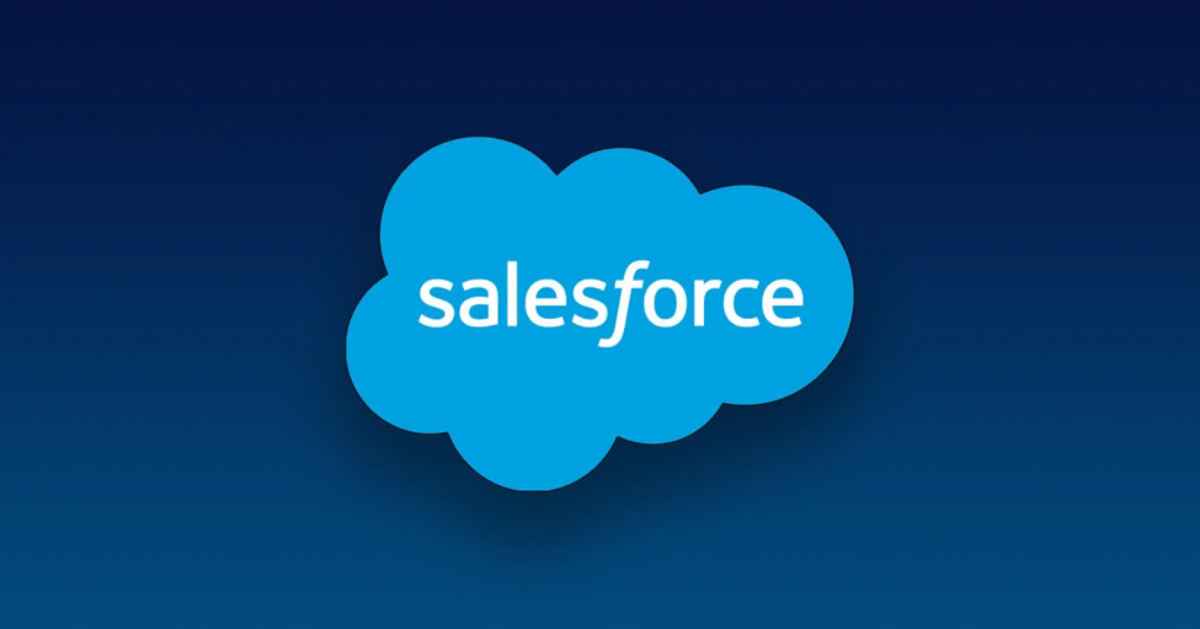The Salesforce Implementation Process: 10 Things You Must Know

Salesforce has led the Customer Relationship Management (CRM) market for more than a decade, boasting a 23.0% market share, according to reports from Salesforce itself. Their powerful solution offers intuitive features such as flexible scalability and complex customizability – continually improving. Well-known global organizations such as Spotify, Toyota, Canon, and over 150,000 other businesses trust Salesforce as a business operation optimizer.
A Salesforce implementation company gives businesses an easy and efficient way to manage business operations, sales, marketing, finances, etc. By connecting every department in a seamless system and providing teams with complete visibility of every client interaction – whether sales leads or financial data – Salesforce allows businesses to increase revenue while delighting and retaining customers while finding growth opportunities.
Though Salesforce can help your business expand exponentially over time, preparation before implementation is essential to setting it up for long-term success. One reason behind its immense popularity lies in its successful implementation outcomes – for instance, a well-executed Salesforce implementation can result in an average revenue increase of 37% and a productivity boost of 44% if done right; otherwise, it’s likely to fail just like most CRM projects do.
Salesforce implementation partners offer several products designed to achieve specific goals: Sales Cloud, Revenue Cloud, Service Cloud, Marketing Cloud, and Pardot are just a few examples. If used appropriately, Salesforce CRM will increase sales efficiency, close more deals quickly and improve forecast accuracy.
CRM implementation projects often have an estimated failure rate between 30-70%; however, you have the power to make your software implementation and rollout successful by planning, implementing, and training appropriately for it. Your success as an end-user will ultimately determine its success or otherwise.
Enterprises that embark on a Salesforce implementation must plan carefully, invest in the right partner(s), and involve end-users as much as possible in the change management process – including all affected employees will increase your odds of successfully implementing Salesforce.
Implementing Salesforce
Businesses worldwide are turning towards CRM implementation at an increasing rate; according to Grand View Research’s estimates, spending will reach $114.4 billion by 2027.
If your business is faltering, one way to help reverse its decline is to devise a plan focused on customers and supported by cutting-edge technology. Organizations usually aim at reaching their business objectives of increasing sales and profits, and to do this, they require up-to-date details from customer service, sales, social media monitoring, marketing, etc., to accurately monitor the progress of business progress.
Not enough is accomplished simply by purchasing the world’s premier CRM license; that is only step one. Steps two and three require adapting it specifically to fit the needs of your own business to make the most of its functionality. Full implementation requires project managers, Salesforce consultants, and (possibly) Salesforce developers – resources not all companies possess within themselves.
Businesses often turn to Salesforce to manage complex business operations. Still, without an effective plan and roadmap, coordination among departments, sufficient training sessions, and the proper support services, your team may lack the confidence or knowledge for a smooth Salesforce implementation process.
Implementation of Salesforce can assist businesses in numerous ways, such as:
- Enhance customer relationships: With CRM data at your disposal, you can quickly locate all the information required for providing exceptional customer service.
- Increase productivity: With Salesforce, you can automate many tasks, such as creating invoices and running email marketing campaigns, saving time and improving productivity.
- Tracking Sales Pipeline: Salesforce can help you track your sales pipeline and forecast future sales, allowing more intelligent decision-making about where to put effort.
- Lead and Opportunity Management: Salesforce allows you to manage leads and opportunities efficiently. You can track each opportunity’s status and predict when it will likely close.
- Salesforce Provides Greater Insight into Your Business: With Salesforce at your disposal, you can access a vast amount of data to use for better decision-making about your company. Steps for Successful Salesforce Implementation
Steps for a Successful Salesforce Implementation
Planning a Salesforce rollout is a significant undertaking, so take the necessary steps before embarking on your project to prepare it as thoroughly as possible. Start with these four steps.
Establish Core Goals, Needs, and Challenges with Business Stakeholders
Step one should involve convening all key stakeholders at an initial meeting to establish goals and objectives of implementing Salesforce to ensure everyone is on board and that there is buy-in from all departments.
Your vision should encompass your deepest-held values and the reason your company exists. Setting your company’s long-term, overarching goal will remind you what matters most during each project. Understand internal challenges to set expectations; identify daily issues experienced by personnel at various levels; and pinpoint ones that can be resolved via software solutions – prioritizing teams while setting realistic system goals is the result.
Requirements vary by business, so ensure that every stakeholder in the meeting understands their needs for Salesforce. In this meeting, identify any risks or roadblocks that could impede its successful implementation, as well as internal challenges your teams are encountering – meeting with them directly can highlight any pain points they face daily.
Finally, creating a project plan would help determine what steps must be taken, who is accountable for each task, and when completion should occur.
Document All Procedures and Daily Activities
Take the time to learn your teams’ daily tasks and corresponding workflows.
Engage each department within your organization in documenting its processes and identifying potential areas for optimization. Once documented, document all internal processes. This will allow you to assess whether Salesforce integrations could automate tasks and increase efficiency; make sure to be as detailed as possible when documenting these. Once complete, start mapping how Salesforce could use them to improve.
Not everything needs to be automated; specific tasks should still be performed manually to ensure accuracy and quality control. You should also identify which data fields will be necessary when designing Salesforce for implementation purposes, which will assist in the design phase of implementation processes.
Predict Project Budget and Timelines by Outlining both budget and timeline constraints.
It is also crucial that your expectations and requirements remain balanced with your budget estimate – for more accurate projections, connect with an experienced Salesforce consultant with years of experience.
When creating a budget, plan for any delays or roadblocks in the form of flexibility in your timeline to meet all essential needs and expectations with an accurate preliminary budget estimate. Licensing costs, software ownership or leasing costs, consulting costs, training costs, and number of users needed can add up quickly. Plus, there could be migration and customization expenses too.
To avoid resource shortages, your Salesforce project mustn’t overlap with any major projects. Once you’ve established your goals, determining your timeline becomes much more straightforward as key rollout phases, tests, and kickoff meetings can all be planned with precision. Remember that an implementation may take four weeks or longer (depending on customization needs). Assess how this will impact ongoing projects before identifying who needs to participate and ensuring their availability for implementation.
Your timeline should contain milestones you hope to meet for successful implementation. A vision, goals, and timeline give your company an outline of project expectations.
This will ensure your project stays on schedule and within budget and is essential in setting realistic budgets and timelines for Salesforce implementations, which often take longer and cost more than initially anticipated. Make sure there is an alternate plan available should things take longer or cost more than anticipated – failing to set an appropriate budget or timeline can result in an unsuccessful implementation of Salesforce.
Establish Success Metrics
Before embarking on any Salesforce implementation project, you must establish success metrics. This will enable you to track its progress and ensure it meets your business goals. Various metrics are available; just ensure they are tailored specifically for your company – such as sales figures, customer satisfaction levels, lead conversion rates, product usage, or ROI. Ensure these measurements are regularly tracked so you can adjust as necessary for optimal success with Salesforce implementation.
Setting tangible objectives and metrics will enable you to evaluate the success of your Salesforce implementation project, such as reducing case resolution time by 40% or increasing lead flow by 30%.
Establish measurable goals and metrics to evaluate your first Salesforce implementation plan’s success, making goal tracking and strategic adjustments easier. These specific measurements allow for goal monitoring and strategic alterations.
Establish Communication Channels and Plan Effective Strategies
Communication is one of the cornerstones of a successful Salesforce implementation, as clear and regular team collaboration is integral to meeting goals for CRM deployment and adoption. A communication plan should outline who needs to be kept up-to-date, how frequently, and when.
There should also be a dedicated Salesforce team responsible for communications. This team must understand the project and be available to address any stakeholder inquiries. In addition, they should establish specific channels like email, Slack, or Sharepoint where updates, announcements, and discussions on this matter may occur.
Assign Project Stakeholders and Individual Roles
Next, leverage the expertise of experts to ensure a successful Salesforce implementation. A Certified Administrator can assist in identifying what needs to be accomplished while also using best practices and in-depth system knowledge to make this happen.
Hire a team of specialists – project managers, consultants, and developers – to implement Salesforce for you. This can include project managers, consultants, and developers. They will assist with:
Integrate external systems, enhance data management, train your team, and customize a system tailored specifically to meet the unique requirements of your business. They will also Provide ongoing support and maintenance.
It is critical to identify who the project stakeholders are. They typically fall into three categories:
- Business Stakeholders: Stakeholders for Salesforce implementation should be charged with defining business requirements and ensuring they are met. Furthermore, these stakeholders should take part in testing and approving its final product.
- IT stakeholders: IT stakeholders are accountable for designing, developing, and maintaining the Salesforce environment and offering training and support to end-users.
- End User: They will use Salesforce daily for sales or customer service processes and should test it to ensure it meets their needs, providing feedback during implementation.
Key Project Stakeholders: IT specialists, Channel partners, CRM Platform Users, Customers Sales teams, Senior management as well as Marketing departments will all play critical roles.
Various people may perform these roles on a project, or even one individual may fulfill multiple responsibilities simultaneously. While dedicated experts from a Salesforce implementation company may be beneficial, one person could effectively fulfill multiple vital roles. It’s also vitally important that we identify any potential barriers which could impede implementation, such as:
Each stakeholder will have different needs and expectations of the project, making it vital that everyone understands their role and can contribute towards its success. Furthermore, the Salesforce team should clearly understand each stakeholder’s expectations; failing to do this may result in the failed implementation of your Salesforce project.
Create a project methodology
Most businesses opt to implement Salesforce using one of two strategies.
- Sequential (waterfall) Method: This is the traditional approach to project implementation, where you follow an incremental timeline to meet your goals. All components are developed, tested, and implemented before going live with their services.
- Iterative (agile or “scrum”) Method: Construct your system through an iterative, cycle-like approach, breaking it up into multiple smaller projects built and tested before going live to help prepare different aspects of the system. This approach can reduce any problems you might face using more traditional approaches.
Create a Change Management Plan
Salesforce is an invaluable tool that can help businesses automate their sales and marketing processes, but it should not be treated as a magic solution. Therefore, having a change management plan ensures a smooth Salesforce project implementation.
The first step of developing a change management plan: identify who is accountable for running the Salesforce environment, who has an in-depth knowledge of how it functions, and who can train other users on its features. Once that step has been taken, create training materials for end-users, including video tutorials, user guides, or in-person training sessions to familiarize end-users with how to use it before implementation occurs.
Change management is an integral component of any Salesforce implementation project, and by taking the time to draft a change management plan, you can increase its likelihood of success. Before initiating Salesforce implementation, create and follow through on an appropriate change management plan – which must continue after going live!
Understand Salesforce Structure and User Interface
Salesforce stands out among business software options by its customizable user interface, enabling you to tailor it specifically for your business’s and its users’ needs. To begin with, creating user profiles gives them access to only those fields and pages they require – but you can also personalize its appearance by changing color schemes, fonts, and other settings.
Start by exploring the Salesforce home page – here, you will gain an overview of your Salesforce environment, such as dashboards, reports, and notifications. Knowing its appearance, usability, and structure before beginning will allow you to manage expectations about system capabilities while adapting your business process to this new platform.
Next, familiarize yourself with Salesforce’s modules. There are five primary modules – Accounts, Contacts, Leads, Opportunities, and Cases. Each can help manage sales or customer service processes effectively. Finally, don’t forget about exploring AppExchange!
Create Ongoing Support
Before implementation, prepare for ongoing support. You’ll require someone or team members to address enhancements, bugs, user issues, and any new project requirements as they arise.
If your budget doesn’t allow for Salesforce’s Premier Success Plan, consider hiring a fractional Salesforce Administrator instead. Port & Starboard offers an entire team of Salesforce-certified individuals to provide customer and project support and ongoing maintenance for Salesforce installations that have failed or customize its features according to your specific needs.
Conclusion
Salesforce implementation involves rolling out their core product — CRM (customer relationship management) system — to centralize all business activities and communications. This platform unifies the three most commonly-used CRM product types – operational, analytical, and collaborative – making it the go-to CRM solution on the market. Salesforce boasts an expansive ecosystem of native products, such as Sales Cloud, Service Cloud, and Marketing Cloud, which meet different sales, service, and marketing professionals’ specific needs.
As you draft your Salesforce implementation plan, remember that your team’s use of the platform will ultimately decide its success or otherwise. Make an investment in both employees and in CRM development equally:
- Ask employees what they would like out of it and how you can support their transition during implementation.
- Ensure they receive all resources needed.
- Listen closely as implementation wraps up.
- Continually solicit employee input on ways it could improve to avoid low adoption rates that plague so many implementations.
ROI should be an absolute top priority for any organization implementing new technology for business use, and reaching your desired implementation outcome – on time, within budget, and functioning correctly – can play an instrumental role in realizing or exceeding it.
Implementing large and complex enterprise applications (like Salesforce CRM or an ERP solution) carries with it increased risks. Not understanding fully what needs to be done may cause the entire implementation process to stall and lead to failure. If implemented correctly, Salesforce CRM can transform your business by simplifying and automating many processes, ultimately increasing productivity and results – but challenges will emerge during its implementation.






